Fillrate and shading
Let's take a look at the cards' basic vital statistics.| Card | SAPPHIRE X800 GT Hybrid | Galaxy GeForce 6600 GT | ATI Radeon X700 Pro |
| Interface/speed | PCI-Express | PCI-Express | PCI-Express | Onboard memory | 256MB | 128MB | 256MB | Core speed | 475MHz | 525MHz | 425MHz | Rendering pipelines | 8 | 8 | 8 | Fillrate (multi-texturing) | 3.8GTexels/s | 4.2GTexels/s | 3.4GTexels/s | Memory interface | 256-bit | 128-bit | 128-bit | Memory speed | 980MHz | 1050MHz | 865MHz | Memory bandwidth (max) | 31.36GB/s | 16.8GB/s | 13.84GB/s | Vertex shaders | 6 | 3 | 6 | Shader Model | 2.0b | 3.0 | 2.0b | Cheapest online price | £110 | £105 | £95 |
The 256-bit memory interface pushes up SAPPHIRE's bandwidth to levels that we normally associate with high-end cards. Let's see how it fares in 3DMark05's theoretical tests.
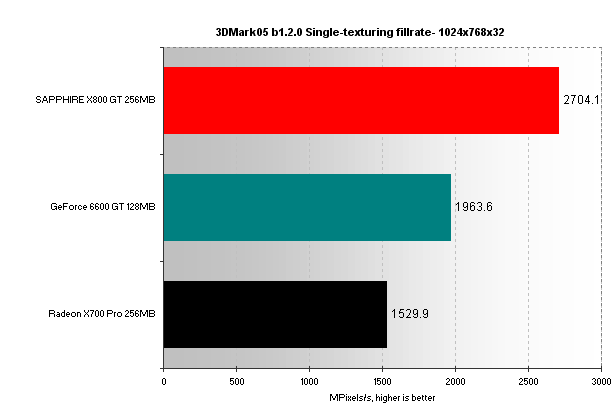
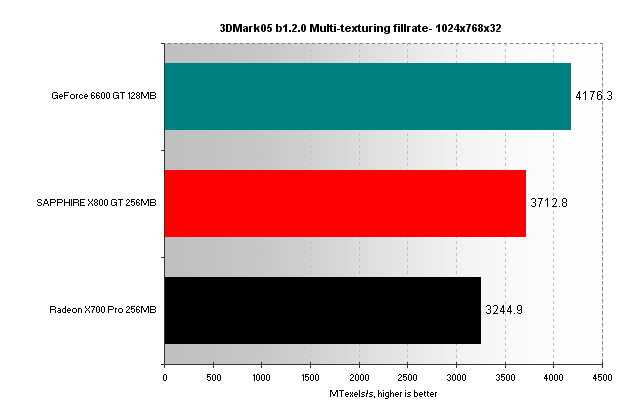
Excellent single-texturing fillrate performance and decent multi-texturing fillrate already makes the X800 GT 256MB card a better proposition than the present X700 Pro.
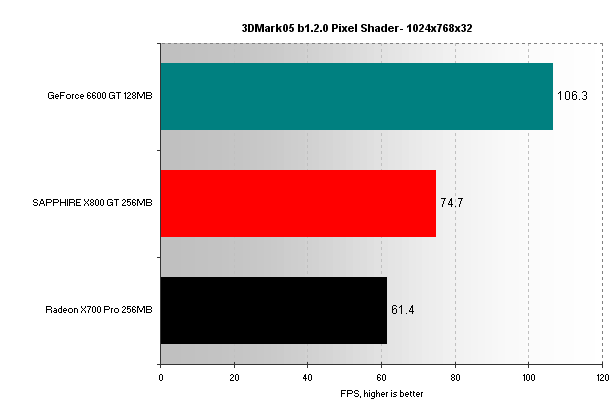
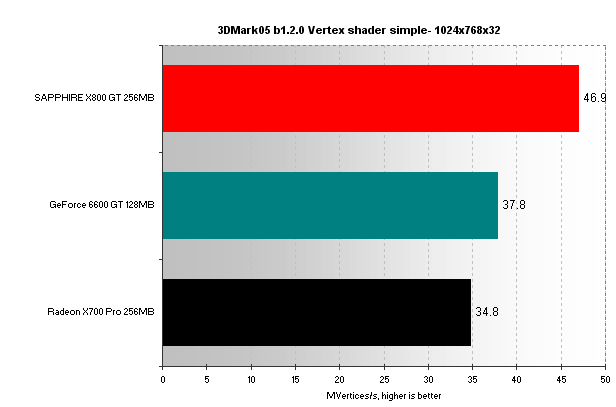
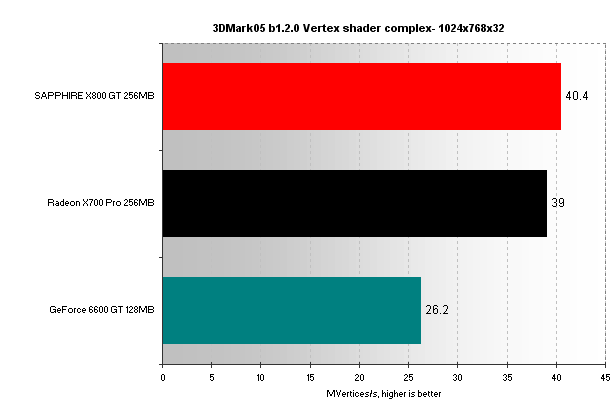
Pixel shading performance isn't quite up to GeForce 6600 GT standards, but vertex shading certainly is. How does all this data fit in with results from our benchmarks?....









